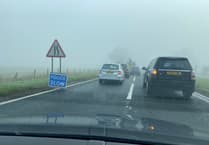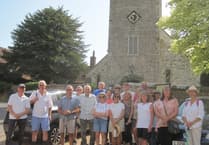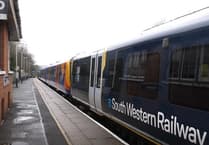Two of the key aims of the Farnham Infrastructure Programme when it was set up in 2019 were to tackle congestion and improve air quality, writes Surrey County Council leader and chairman of the Farnham infrastructure Programme board Tim Oliver (Conservative, Weybridge).
There are engineering solutions to support this – such as the town centre and A31 improvements we consulted on last year.
However, its supporting people in Farnham to leave the car behind and to walk or cycle or use public transport as much as they can which will make the big difference.
Why encourage walking and cycling?
Supporting walking and cycling is in line with our local, national and international agreements and policies to tackle the causes of climate change.
It’s also a key theme in both the programme’s Vision Statement and the Optimised Infrastructure Plan, which were both adopted by the Farnham Board following public consultation.
The new Surrey-wide transport plan, adopted by Surrey County Council last year, highlights the need to avoid unnecessary travel by reducing the number and length of trips needed, shifting to sustainable travel options, and improving the efficiency of vehicles and roads.
The transport plan also directs the county council to prioritise travel from the least polluting to the most polluting using this hierarchy:
- walking
- cycling
- e-bikes
- public transport
- car clubs, taxis, car sharing
- private car
- air travel.
This is supported by the Highway Code which highlights that pedestrians are most at risk in a collision.
What does that mean for Farnham?
Farnham’s historical transport network means difficult decisions and compromises have to be made to get the best all-round solution.
As we’ve already highlighted, its vital to enable and encourage active and sustainable travel, while recognising that some people will need to drive, and that we actually want to solve the town’s transport problems and not just move them around.
For our town centre proposals, we were mindful that we needed to use the limited space available to support a vibrant and economically-viable town centre. That is why we took the decision to prioritise pedestrians at this time by proposing wider pavements, while recognising that the town isn’t ready for pedestrianisation.
However, engineering like road improvements won’t solve the town’s transport problems alone. It’s important to recognise that the most realistic way to achieve and enjoy the benefits of enhanced public space and improved air quality is by substantially reducing car use.
That means helping and encouraging people to swap to active and sustainable ways of getting around like walking, cycling and using public transport.
A whole town approach
As part of the infrastructure programme we’re developing a local cycling and walking infrastructure plan (LCWIP).
This is a strategy designed to last at least 10 years and aims to make walking and cycling viable and attractive for everyday journeys. It’s written to a Department for Transport methodology, and will support a borough-wide LCWIP for Waverley.
LCWIPs give a prioritised programme for improvements and highlight the main routes or corridors between key areas and destinations – particularly focused on journeys to work or school. But it does not include designs, identifying issues around particular locations, timeframes or funding.
Once the LCWIP is endorsed, we need to look at the feasibility of the routes – identifying and mitigating local issues, modelling traffic impacts, doing ecology and archaeological surveys and so on.
Its only once that feasibility work is complete that we’re able to look into our funding options – and those could be from the government, from council funding or from levies charged to private developers to support local infrastructure improvements.
So its not accurate to say that we’re missing out on funding by not having a final LCWIP now – this is a long-term programme.
The draft Farnham plan looks at potential routes running to and through the town centre from key areas all around the town – and beyond too by linking with the LCWIPs for Waverley borough and adjacent councils like Rushmoor which includes Aldershot.
A lot of time and energy is going into the Farnham LCWIP to make sure it’s right, that it makes it more enjoyable for walkers and cyclists to move around the town, and we prioritise resolving pedestrian issues.
Short- and medium-term interventions
But that’s not all we’re doing. To support the objectives of the LCWIP, new totems have been installed around the town centre with maps to help pedestrians navigate around without having to jump back in their cars.
We’re also preparing to install new signage in the town centre and Weydon Lane so we can lower the speed limit to 20mph which will make the roads safer for pedestrians and cyclists.
The design for a further 20mph zone in Upper Hale Road is being updated to include a new pedestrian crossing.
And in advance of the LCWIP routes being finalised, both Surrey County Council and Waverley Borough Council are continuing to work on improved pedestrian and cycle routes in Farnham through our medium-term interventions project.
This is supported by county council schemes like Bikeability which teaches cycle skills and safety to children from age five up to age 11.
These projects can feel like a long journey, but what’s important is they are done right, serve the local need, don’t have unintended consequences and, above all, reduce the number of cars on Farnham’s roads each day.
To find out more about the Farnham Infrastructure Programme, including the Vision Statement and Optimised Infrastructure Plan, visit surreycc.gov.uk/farnhamprogramme




